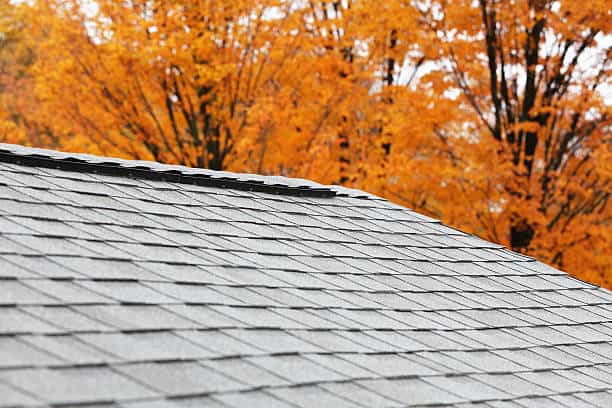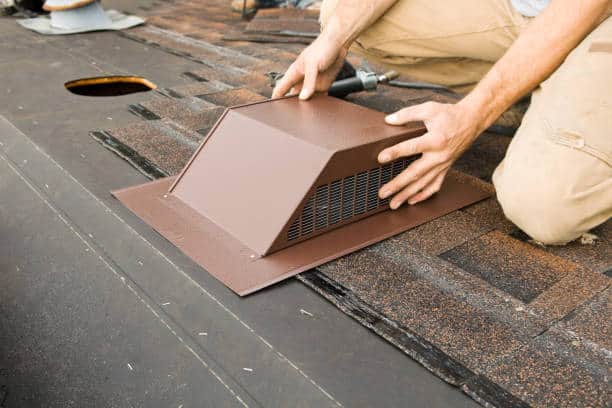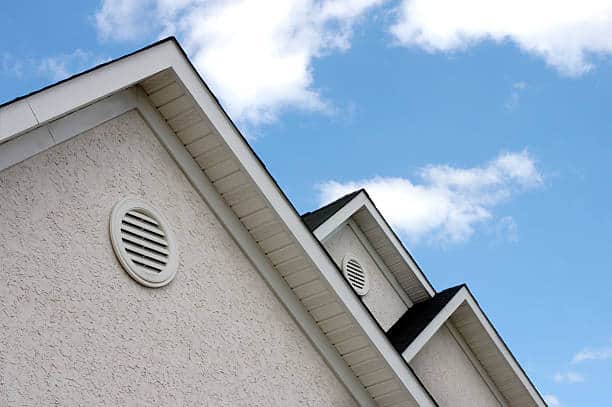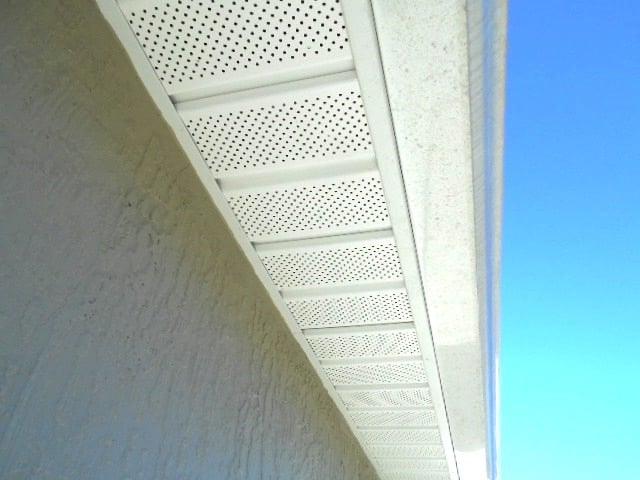Types of Roof Ventilation
We’ve covered the why, but there’s several types of roof ventilation products depending on the type of roof you have and what amount of airflow you require. A balanced ventilation system will have 2 or more of these most common vent options.
Ridge Vents:

The most popular choice for homeowners, ridge vents are exhaust vents installed at the peak of the roof and extend across the entire roof line. Hot air naturally rises and exits out the ridge vents, pulling in the cooler air from below. Small gaps on the underside of the material allow hot air to escape your attic, and resists pests and wind-driven rain and snow. Ridge vents don’t require electricity to operate. Because they extend the length of the roof line, they provide significant hot air exhaust from your attic while maintaining the look and cleanliness of your roof appearance. Ridge vents are available for both asphalt and metal roofs although they do differ in appearance.
Static Vents:

Static vents are small metal boxes, close to the peak. They come in a variety of shapes and colors to match your roof’s aesthetic and needs. Also called turtle vents, or box vents, these allow heat to escape out of attic similar to ridge vents. When a ridge vent isn’t an option, multiple static vents are evenly spaced across the roof near the peak. They do not require power to operate and offer a practical and economical solution.
Gable Vents:

Gable vents are located on opposing sides of the house, just below peak. Available in different sizes and shapes, gable vents utilize cross ventilation. These work best on simpler roofs. Gable vents can be less effective on complex roofs where airflow may be blocked by rafters, dormers, and other structural items in the attic space. Like having two windows open on opposite sides of a room, these vents pull cool air in one side and push it out the other.
Soffit Vents:

Soffit Vents are located at the bottom edge of the roof, in the space referred to as the overhang. They have a wide variety of designs, but all have some form of small holes allowing cool air to be pulled into the attic. This pushes the hot air out the through the exhaust vents. Many of the soffit vents installed by Star Improvements have been hidden vent soffits. Customers prefer the clean look of the soffit without being able to see the venting.
There are other types of more specialized vents. Turbine vents, venting specific to the roofing material, or even powered vents via electrical or solar are available. If you think you might need new venting or to upgrade existing venting, please get in touch with Star Improvements!
